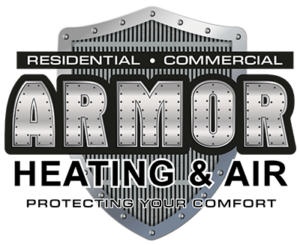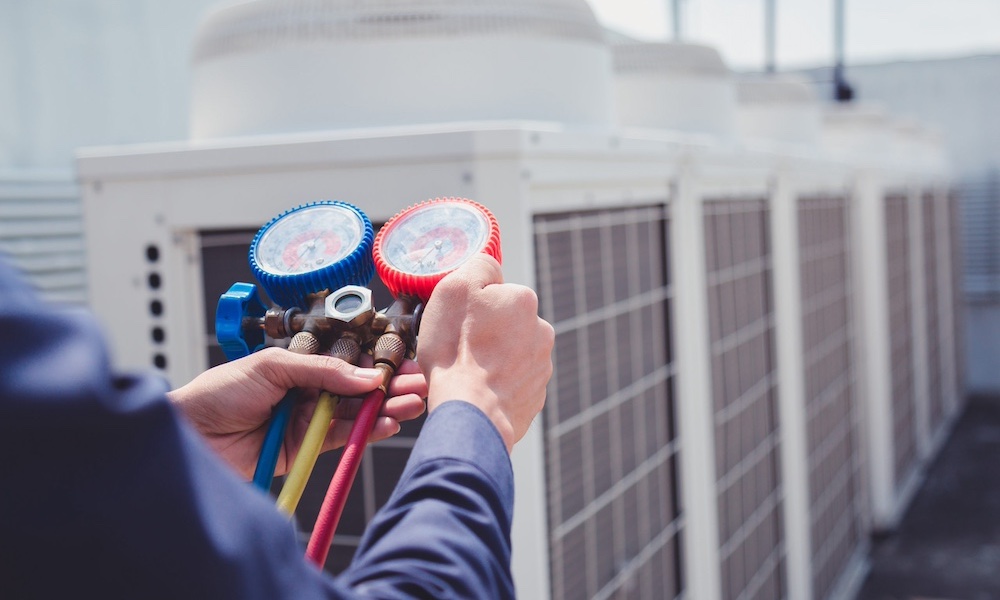ERV – What Is It and How Does It Work in Centerton, AR?
Newer homes have a fully sealed outer envelope that minimizes air leaks in order to improve the building’s energy efficiency. The only issue with this is that it traps stale air inside and prevents fresh air from getting into the building, which is why many new homes in Centerton, AR, require mechanical ventilation such as an energy recovery ventilation system or ERV. Let’s take a look at exactly what an ERV system is and how it works.
An Introduction to Energy Recovery Ventilation
An ERV is a type of ventilation system that uses two fans to pull fresh air from outside into the building and draw the stale air from inside out. This is important for replenishing the building’s supply of fresh, clean air and improving indoor air quality. However, it also creates problems with energy waste and heat loss or heat gain.
The reason is that it brings the hot or cold air from outside into the building, which will obviously raise or lower the temperature inside. It also draws the heated or cooled air from your HVAC system outside, and this further increases the problem.
All of this means that your heating or air conditioning system will have to run longer to maintain a consistent temperature. This leads to higher energy costs and increased wear and tear on your furnace, AC or other HVAC unit.
ERV systems overcome these problems by using a heat exchange to absorb and transfer heat energy between the ingoing and outgoing air stream or vice versa. This allows the ERV to pre-heat or pre-cool the outdoor air before releasing it into the building. This reduces the strain on your HVAC system as the air coming into the building isn’t as hot or as cold as it would be otherwise.
How an ERV System Works
As an ERV system runs, the two fans are always spinning in the opposite direction. One fan spins to draw air into the building, while the other works like an exhaust fan to bring air back outside. As this is happening, the heat exchanger is constantly absorbing heat energy and transferring it from one stream to the other.
ERV systems work differently during the summer and winter. In the summer, the colder outgoing air cools the heat exchanger. The system then transfers this to the incoming air to cool it down as it enters the building.
In the winter, the system does the opposite. The heat exchanger absorbs heat from the outgoing air and transfers it to the air coming into the building.
How ERV Systems Help Control Indoor Humidity
The primary difference between an ERV system and other systems, like heat recovery ventilators (HRVs), is that an ERV transfers both heat and humidity between the air streams. When the ventilation system runs during the summer, it takes both heat and humidity our of the building.
During the summer, the indoor humidity level can increase, potentially allowing biological spores to start growing inside. High indoor humidity will also make it much more difficult for your air conditioning system to maintain a consistent temperature. This leads to the AC system needing to work overtime.
ERV systems eliminate this issue by absorbing moisture from the incoming air during the summer. The system transfers the moisture to the outgoing air and then pumps this hot, humid air back outside.
As with the heat transfer, this moisture transfer process also reverses direction during the winter. When your furnace runs, it removes most of the moisture out of the air. This is why buildings typically feel so dry during the winter.
To prevent the indoor humidity level from dropping too low, the ERV works to absorb whatever remaining moisture is in the outgoing air before it pumps it outside. The system then transfers the moisture to the incoming air to raise the humidity level.
At Armor Heating & Air LLC, we specialize in all types of residential and commercial heating and cooling services. From AC and furnace installation to maintenance and repairs, we can handle it all. If you’re looking for more information on ERV systems or need any other HVAC services in Centerton, AR, give the experts at Armor Heating & Air LLC a call today.
Image provided by iStock


